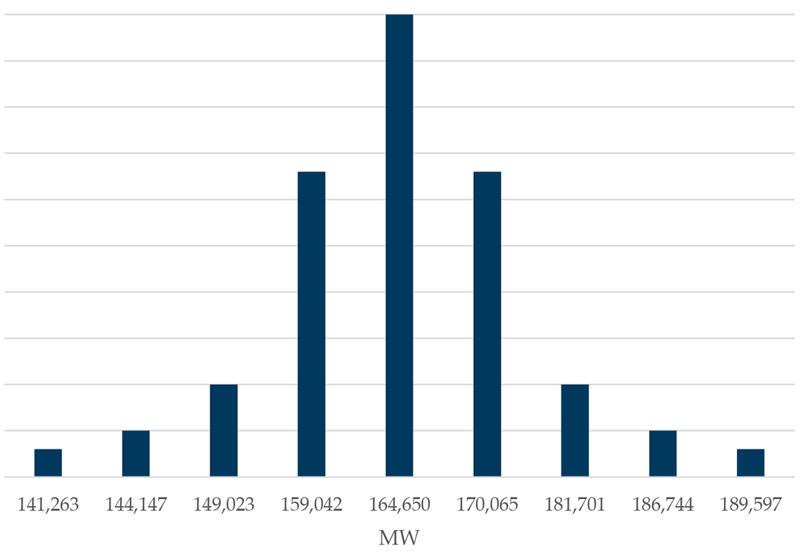Below is a summary of the issues scheduled to be brought to a vote at the PJM Markets and Reliability Committee and Members Committee meetings on Wednesday. Each item is listed by agenda number, description and projected time of discussion, followed by a summary of the issue and links to prior coverage in RTO Insider.
RTO Insider will be covering the discussions and votes. See next Tuesday’s newsletter for a full report.
Markets and Reliability Committee
Consent Agenda (9:05-9:10)
B. Stakeholders will be asked to endorse proposed revisions to Manual 6: Financial Transmission Rights, conforming to the joint PJM-stakeholder proposal addressing auction revenue rights (ARRs) and financial transmission rights endorsed at the October MRC. The changes were initiated after the GreenHat Energy default in 2018, including a six-month review by an independent consultant and work done at the ARR/FTR Market Task Force. (See Stakeholders Endorse PJM ARR/FTR Market Changes.)
C. Members will be asked to endorse proposed revisions to Manual 10: Pre-Scheduling Operations resulting from a periodic review. The revisions were endorsed at the November Operating Committee meeting. (See “Manual Changes Endorsed,” PJM Operating Committee Briefs: Nov. 4, 2021.)
D. The committee will be asked to endorse proposed Manual 14B revisions resulting from a biennial review. The revisions include the addition of a new section that features details around the incorporation of end-of-life (EOL) needs in the Regional Transmission Expansion Plan, which were part of the tariff attachment M-3 discussions. (See “Manual Endorsements,” PJM PC/TEAC Briefs: Nov. 2, 2021.)
E. Stakeholders will be asked to endorse proposed revisions to Manual 14D: Generator Operational Requirements resulting from a periodic review. The updates featured the addition of several new sections, including one describing eDART modeling requirements. (See “Manual Changes Endorsed,” PJM Operating Committee Briefs: Nov. 4, 2021.)
F. Members will be asked to endorse proposed revisions to attachment DD of the tariff endorsed by the Governing Document Enhancement and Clarification Subcommittee. The revision includes removing section 6.2(c) of the attachment because FERC affirmed PJM’s position that this section of the tariff is no longer applicable and encouraged the RTO to remove this provision as part of its next tariff clean-up filing.
Endorsements (9:10-10:10)
1. Undefined Regulation Mileage Ratio Calculation (9:10-9:30)
The committee will be asked to approve the proposed issue charge to create a new senior task force to re-evaluate the current regulation market design. The issue charge was first presented at the November MRC meeting. (See “Undefined Regulation Mileage Ratio Calculation,” PJM MRC/MC Briefs: Nov. 17, 2021.)
If the MRC approves the issue charge creating the task force, another vote will be taken on the short-term proposals from PJM and the Independent Market Monitor addressing the undefined regulation mileage ratio calculation. Both proposals failed a vote at the October MRC. (See “Regulation Mileage Ratio Fails,” PJM MRC/MC Briefs: Oct. 20, 2021.)
2. Solar-Battery Hybrid Resources (9:30-9:50)
Stakeholders will be asked to endorse the proposed solution and corresponding tariff and Operating Agreement revisions to address market participation by solar-battery hybrid resources. PJM conducted a prefiling meeting with FERC staff in September, and the commission made suggestions to reconfigure the language to increase its chances for approval. (See “Solar-battery Hybrid Resources,” PJM MRC/MC Briefs: Nov. 17, 2021.)
3. Synchronous Reserve Deployment Stakeholder Initiative (9:50-10:10)
The committee will be asked to endorse the proposed solution and corresponding tariff and OA revisions addressing synchronous reserve deployment during a spin event. The proposal was developed from discussions in the Synchronized Reserve Deployment Task Force (SRDTF). (See “Synchronous Reserve Deployment Stakeholder Initiative,” PJM MRC/MC Briefs: Nov. 17, 2021.)
Members Committee
Endorsements (1:30-1:45)
1. Elections (1:30-1:45)
Stakeholders will vote on the proposed sector representatives for the 2021/22 Finance Committee and the 2022 sector whips. The new Finance Committee members include: Susan Bruce, PJM Industrial Customer Coalition (End-use Customer); Jeff Whitehead, Eastern Generation (Generation Owner); Bruce Bleiweis, DC Energy (Other Supplier) and; Alex Stern, PSEG Services (Transmission Owner).
The 2022 sector whips include: Adrien Ford, Old Dominion Electric Cooperative (Electric Distributor); Greg Poulos, Consumer Advocates of the PJM States (End-use Customer); Michael Borgatti, Gabel Associates (Generation Owner); Brian Kauffman, Enel N.A. (Other Supplier); and Sharon Midgley, Exelon (Transmission Owner).

